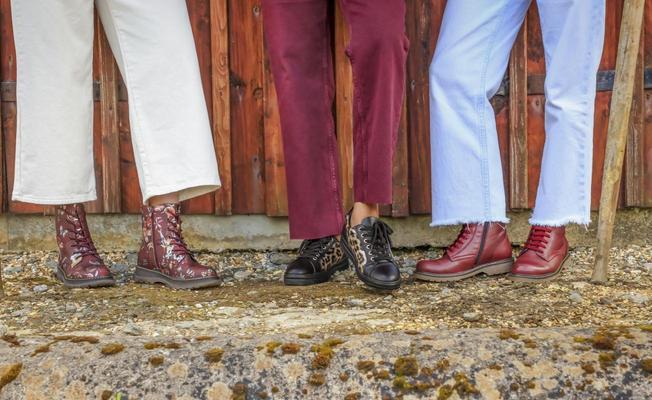
How to Waterproof Your Shoes: Waterproof Shoes Guide
23 October 2025
Wet weather and shoes are not a match made in heaven, but you’ll be pleased to know there are simple steps you can take to minimise damage and keep your favourite pair looking good, whatever the season.
In this guide, we’ll explore the simplest and most effective ways to protect your shoes from water damage. After reading, you’ll know how to keep your feet dry, comfortable, and warm in even the wettest weather. So, whether you're heading out for a rainy-day walk, a snowy commute, or a muddy countryside stroll, read on.
Here’s what we’ll cover:
- How waterproofing works
- The best waterproofing products to use - and how to use them
- Ways to prevent future water damage
- Waterproofing tips for every season
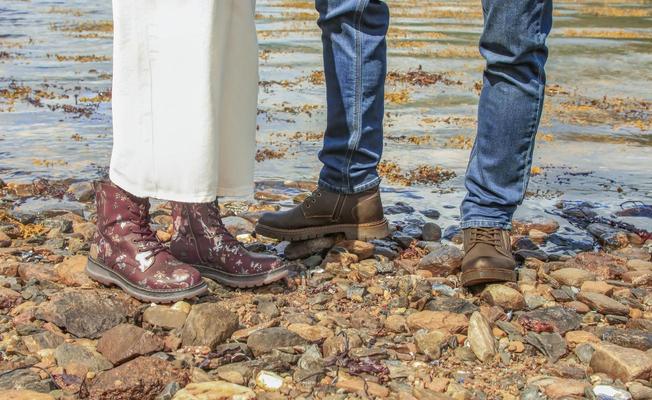
How Does Waterproofing Work?
The process of waterproofing involves applying a barrier to the surface of your shoes that prevents water from penetrating the material, where it would cause damage. This barrier can be built into the shoe during manufacturing (such as with waterproof membranes) or added after purchase via sprays, waxes, or creams. You can also repair the built-in waterproofing if it starts to fail as your shoes get older.
The goal of waterproofing is to create a surface that repels water molecules without compromising the breathability of the shoe. This maintains a balance of comfort and shoe health. Rain, puddles, or snow are prevented from soaking through the fabric, which can lead to discomfort, stains, or long-term damage, while air is still able to circulate.
Different materials require different types of waterproofing products. Leather, suede, canvas, and synthetic fabrics all respond differently to moisture and need tailored care to maintain their appearance and structure. That’s why choosing the right waterproofing method is just as important as the application itself.
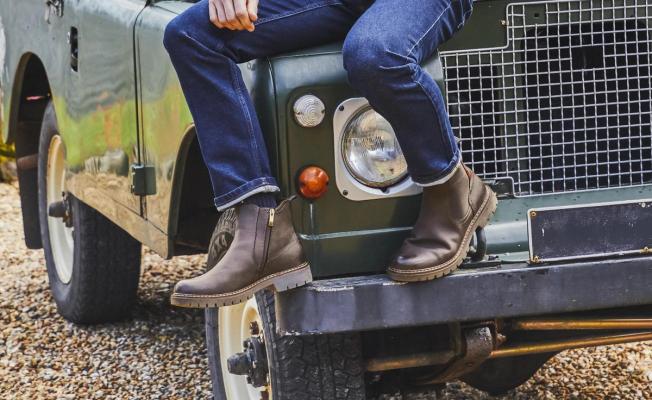
Waterproofing Products to Use and How to Apply Them
There’s no one-size-fits-all approach to waterproofing shoes, but none of the methods are too complicated. From high-performance sprays to traditional waxes, each method offers unique benefits depending on the fabric and finish of your footwear, and how you use them. In this section, we’ll walk you through the most popular waterproofing options, how they work, and how to apply them for optimal results.
Waterproof Spray for Suede and Fabric
Waterproof sprays are an easy and effective solution for suede, nubuck, and fabric shoes. They create an invisible, breathable barrier that repels water without altering the texture or appearance of the material.
How to apply waterproof spray:
- Make sure your shoes are clean and dry before application
- Hold the spray about 6 inches away and apply evenly across the surface
- Don’t soak the material; just aim for a light misting
- Allow the shoes to dry fully (at least 24 hours) before wearing
- Reapply regularly, especially after getting your shoes wet or after cleaning them
Best for: suede, canvas, nubuck, and other porous materials.
Wax-Based Waterproofing for Leather Shoes
Wax is ideal for smooth leather shoes and boots. It conditions the leather while forming a protective layer on top that blocks moisture and adds a subtle sheen.
How to apply wax:
- Clean your shoes thoroughly using a leather cleaner or damp cloth
- Use a clean cloth or sponge to apply the wax evenly in small, circular motions
- Let the wax sit for 10-15 minutes, then buff with a soft brush or dry cloth
- Repeat every few weeks during the wet season
Best for: full-grain leather, smooth leather boots, and walking shoes.
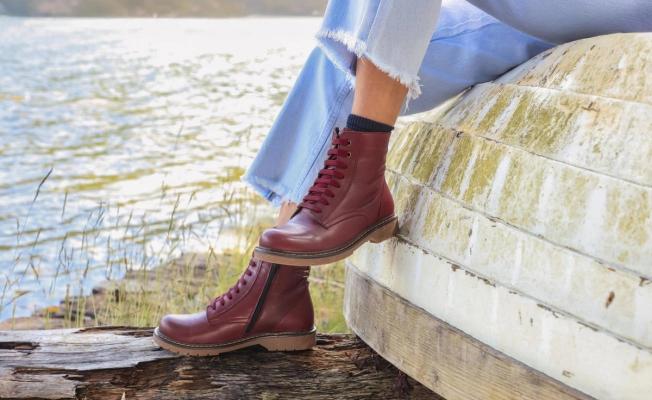
Waterproofing Creams for Protection
Waterproofing creams provide both water resistance and conditioning, making them ideal for keeping leather shoes soft, supple, and crack-free.
How to apply:
- Apply a small amount of cream using a soft cloth
- Massage it into the leather, paying attention to seams and flex points
- Let it absorb for 10-15 minutes before polishing or wearing
Best for: dress shoes, work boots, and other leather footwear needing extra care.
Silicone-Based Waterproofing for Synthetics
Silicone sprays are especially good for waterproofing synthetic materials like faux leather or fabric blends. They form a durable, flexible coating that resists water without stiffening the material.
How to apply silicone-based sprays:
- Make sure the shoe surface is clean and dry
- Spray lightly and evenly, then allow to dry completely
- Apply in a well-ventilated area
- Reapply monthly or after cleaning
Best for: synthetic shoes, backpacks, and other water-sensitive accessories.
Home Remedies (Use with Caution!)
Some people use beeswax, petroleum jelly, or even candle wax to waterproof shoes. These can offer protection, but you need to tread carefully as they may alter the appearance or breathability of your footwear. For this reason, we’d recommend using caution here, especially for high-quality shoes!
How to apply:
- Rub the substance onto the shoe in an even layer
- Heat gently with a hairdryer to melt and spread the wax evenly
- Allow to cool and set before wearing
Best for: old shoes, DIY projects, or as a temporary fix.
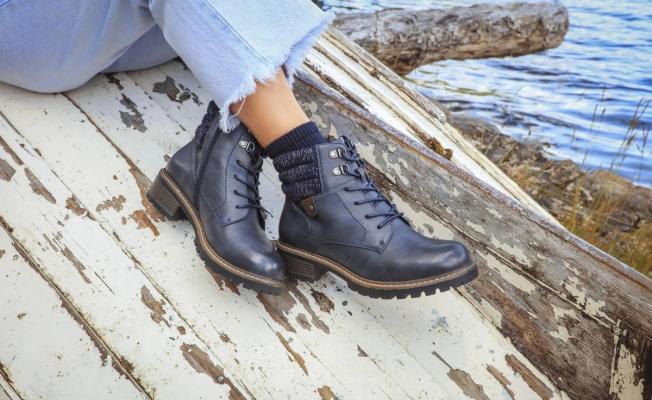
How to Prevent Future Moisture Damage
Waterproofing is a great first step, but taking measures to prevent scruff marks and water-related wear over time is highly recommended. Prevention is the best remedy, as they say!
Here are some ways to minimise water damage:
Store shoes properly: keep them in a dry, well-ventilated area. Use shoe trees to retain shape and absorb moisture.
Rotate your footwear: give your shoes time to air out between wears
Avoid excessive water exposure: try not to wear the same shoes in heavy rain or snow day after day.
Clean your shoes and reapply treatments: After each exposure to moisture, wipe your shoes clean and reapply waterproofing as needed — especially if you’ve been caught in the rain while wearing canvas shoes.
Invest in waterproof footwear: if you're often caught in bad weather, consider shoes with built-in waterproof membranes.
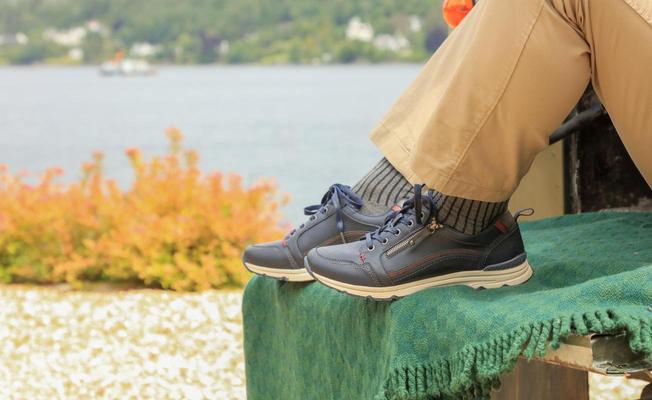
Waterproofing Tips for Every Season
While waterproofing is essential in wet weather, it’s good to get into the habit of building water awareness into your routine year-round. Different seasons come with their own challenges, and your waterproofing strategy should adapt accordingly.
Here are some tips to keep your shoes safe and dry in all seasons:
Spring
Spring showers can catch you off guard. Lightweight sprays are ideal for breathable spring fabrics like canvas and nubuck. Keep a compact waterproofing spray handy, in your handbag, for example, when you're switching between dry and rainy days.
Summer
Even though rain is usually less frequent in summer, unexpected downpours and humid conditions can still cause damage. Summer shoes like espadrilles or fabric loafers benefit from a quick spray, and waterproof sandals can protect against puddles and sea spray if you're heading to the coast.
Autumn
Falling leaves and damp pavements mean autumn is the prime time to reapply those waxes and creams. Leather boots should be treated early in the season and touched up regularly to prepare for the coming cold.
Winter
Salt, snow, and slush are very harsh on shoes. Use a heavy-duty water proofer and make sure to clean off salt residue after each wear, or invest in waterproof boots or shoes with sealed seams for maximum protection.
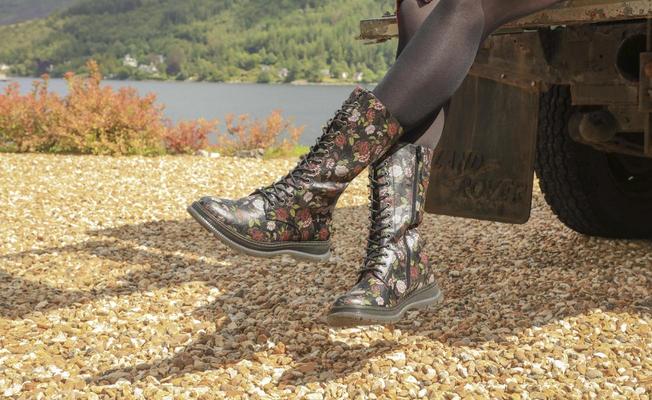
Explore Our Waterproof Collection
If you’re looking for waterproof shoes that look great and perform in any season, explore our collection of waterproof boots and wellies. Each product in our range is crafted to keep water out without compromising on comfort or design.
And if you need more advice on waterproofing your shoes or finding the perfect pair, pop into your nearest store and speak with a member of our team for expert help.
